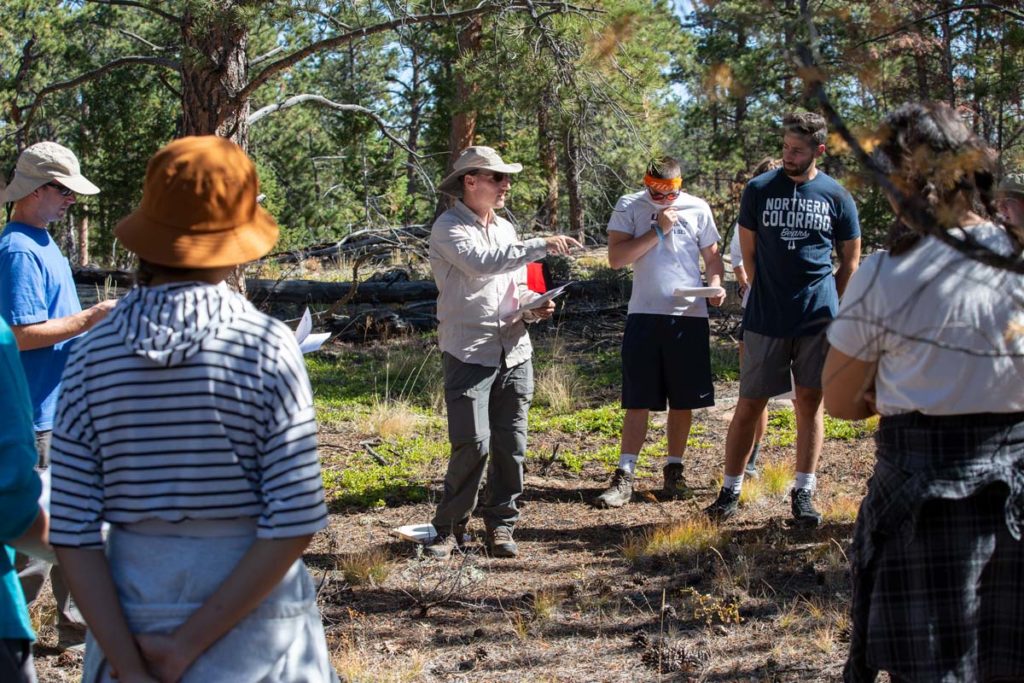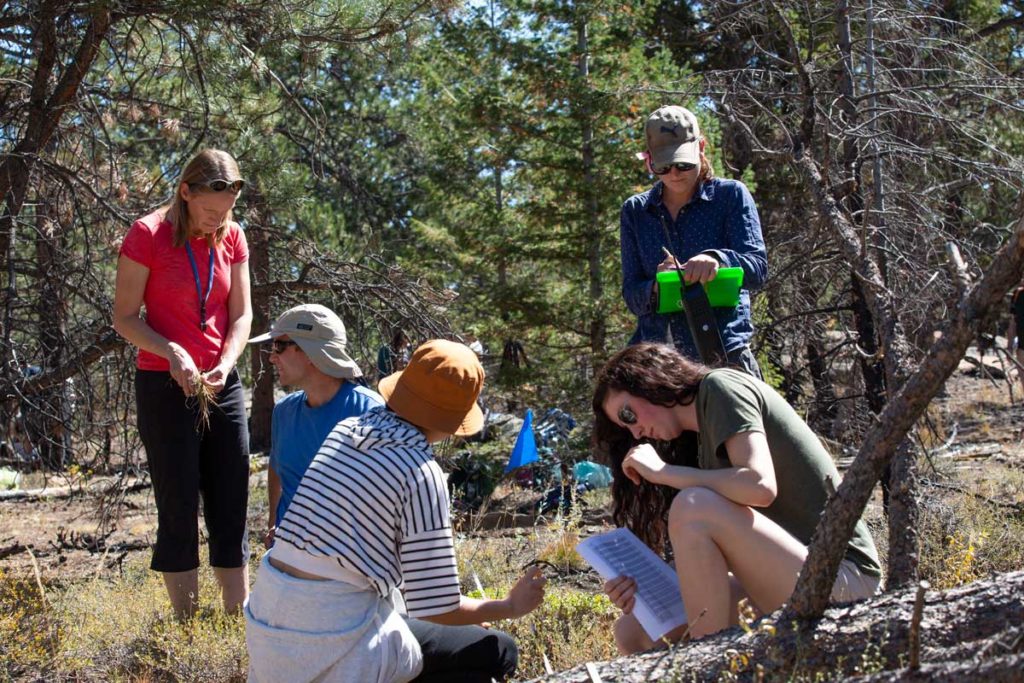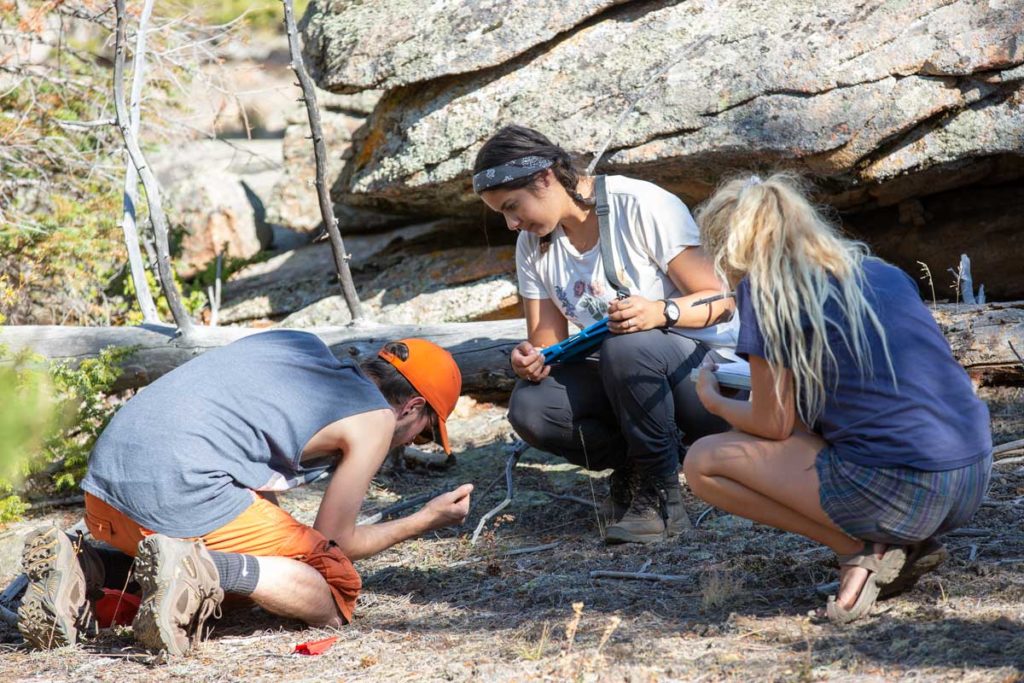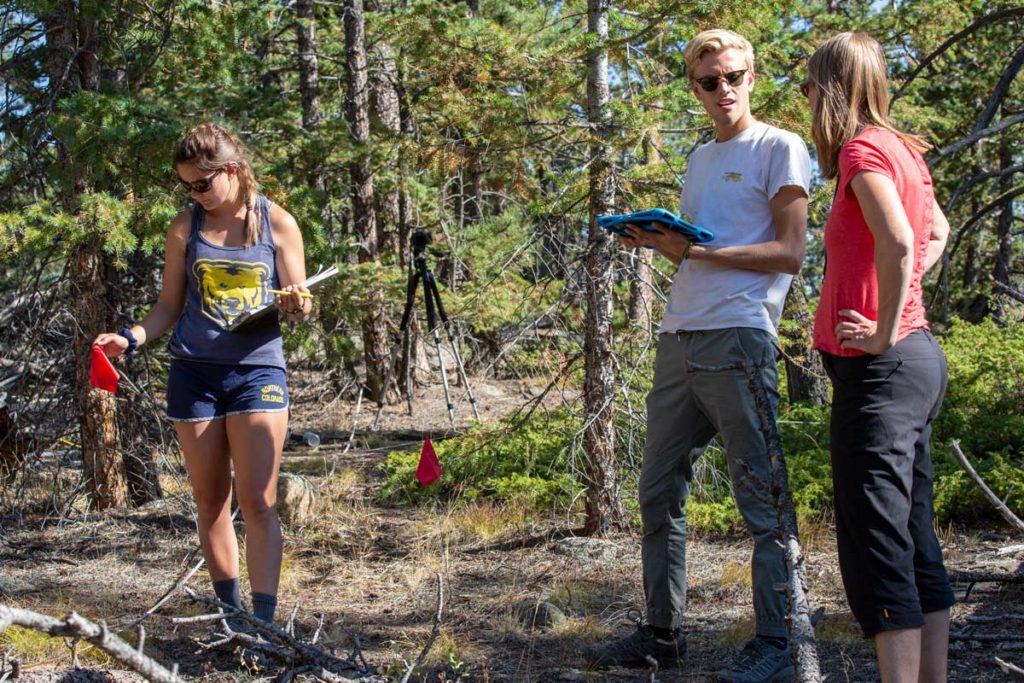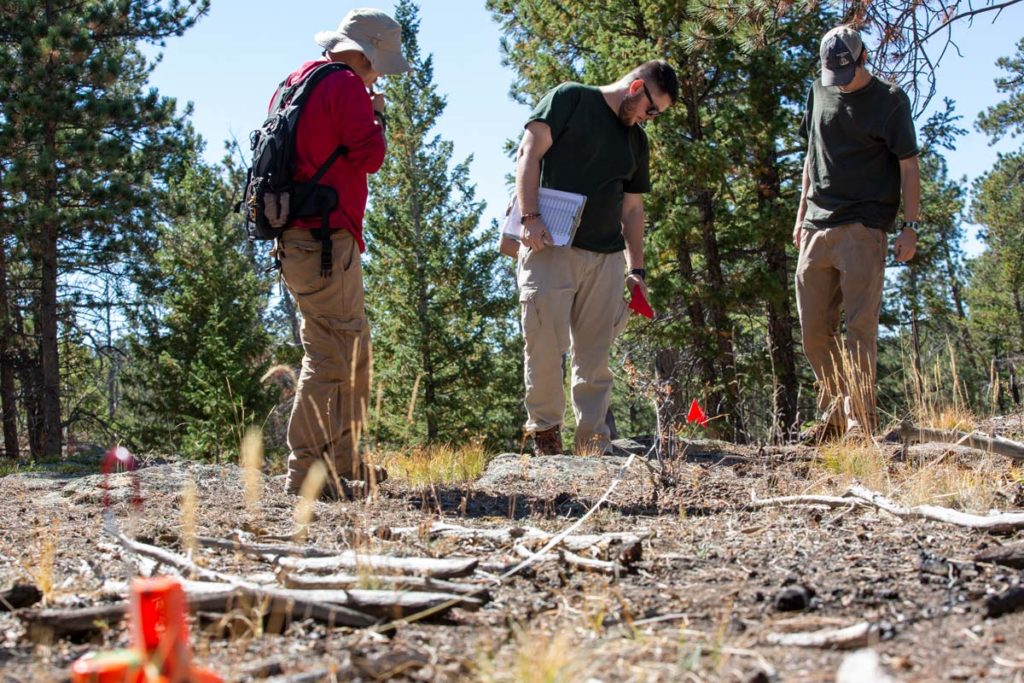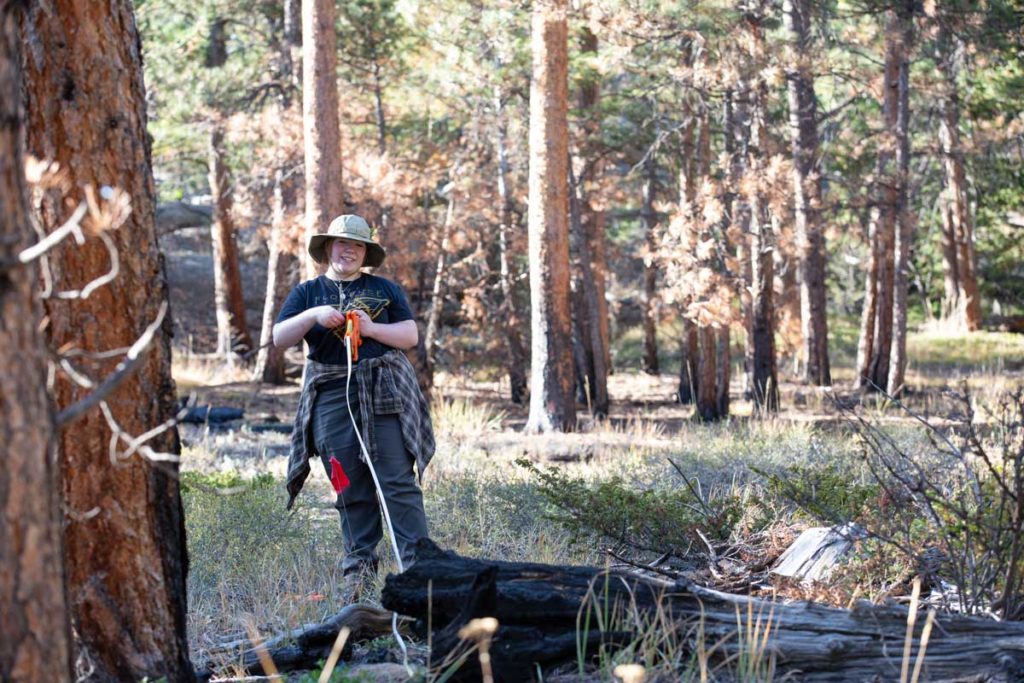Mere days into her freshman year, Ryleigh Gelles applied for a job with the Colorado Forest Restoration Institute at Colorado State University. After multiple seasons as a student employee, this natural resources management senior is now blazing her own research path.
As Gelles immersed herself in forest measurements, she never forgot her inherent love of wildlife. She wanted to combine both interests and so CFRI Research Associate and mentor Kevin Barrett helped her develop an independent study research project to examine wildlife responses to forest management initiatives.
“We found a shared interest in pollinators and began talking about how habitat could be affected by forest management treatments like prescribed fire,” said Gelles. “We wanted to find out how we could manage for both wildlife and forest health at the same time.”
Their discussion launched her on a greater journey exploring the collaborative nature of the research process.
Putting two and two together
Gelles is trying to understand how prescribed fire affects the species richness and diversity of native pollinators. Recently, the importance of abundant pollinators for food production has received national attention. With more than 900 native bee species in Colorado, Gelles decided this group of animals would represent the wildlife component for her study.
Her research combination couldn’t have come at a better time. CFRI has also been a key player in facilitating local community discussion and action for reintroducing prescribed fire as a forest management tool in Colorado. Frequent, low-severity fires historically maintained lower elevation forests and promoted habitat conditions that support diverse plant and animal communities.
“We decided to look at prescribed fire as a forest management tool specifically because it’s a hot topic in Colorado, no pun intended, and it’s gaining support.” Gelles explained.
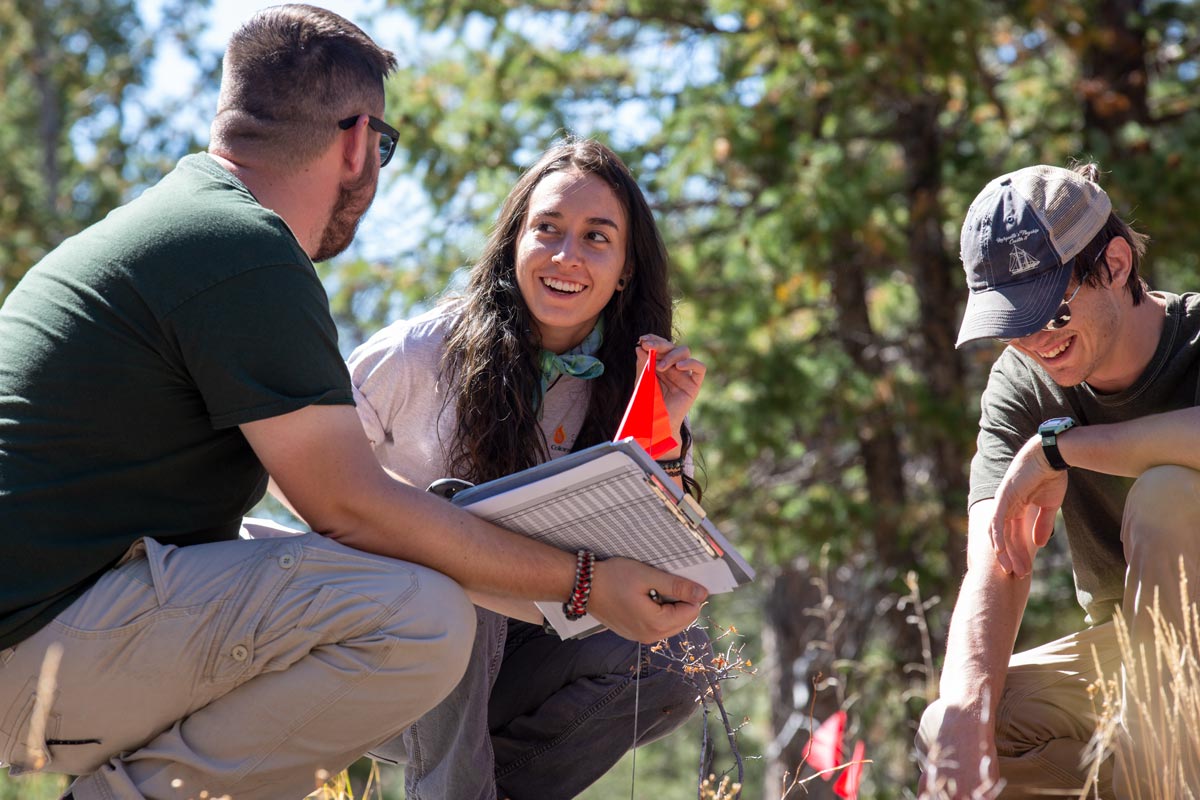
A Front Range research need
Research sites for her project intersected prescribed fire sites where CFRI has been actively collecting pre- and post-burn vegetation data. By looking at both bee and plant responses to fire, Gelles crosses into the realm of community ecology by considering interactions between species along with the dynamics and structures of different species populations within an area.
“This is a unique opportunity to start looking at new aspects of prescribed fire and its role in community ecology and restoration,” Barrett said. “Ryleigh is just beginning to fill that niche; we don’t know a lot about these responses yet, especially on the Front Range of Colorado.”
For this novel research area, Gelles needed plenty of new data and found more than enough willing hands to help her collect and analyze it.
A collaborative whirlwind
When you ask Gelles about her research project she says, “It’s been a whirlwind.”
To collect bees, Gelles approached Assistant Professor Seth Davis in the Forest and Rangeland Stewardship department, a specialist in plant-insect interactions. He offered experimental design advice and loaned her specialized traps to use for measuring bee populations. Fellow CFRI student colleague Ben Markle assisted Gelles with the collection process and in handling specimens in the lab. Boris Kondratieff, professor and director of the Gillette Arthropod Museum at CSU, showed her how to preserve and pin her sample size of more than 600 bees for identification.
“When Ryleigh has it in her mind to pursue something, she takes all the time she needs to accomplish it,” Barrett said.“The project feels more like a professional relationship where we are all helping her figure out this project together.”
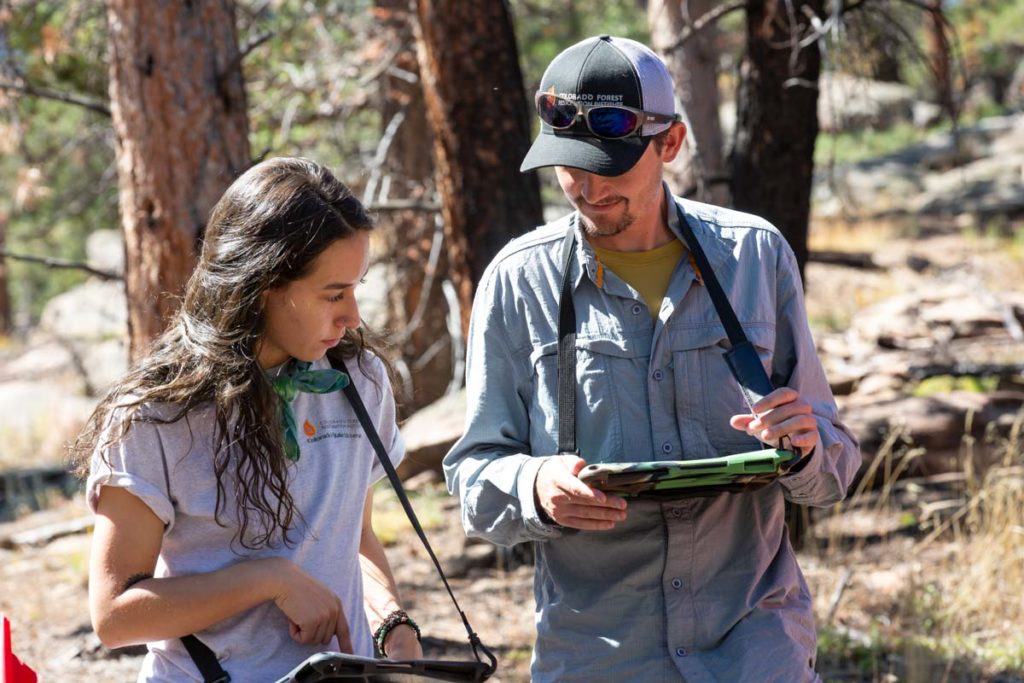
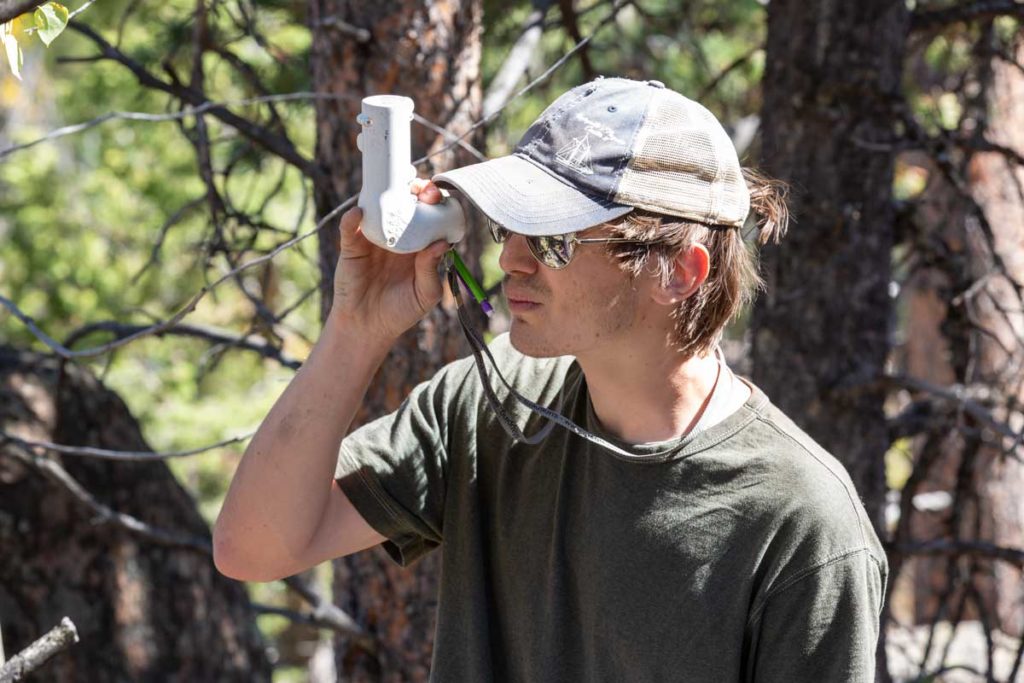
Partnering across universities
Along with other CSU students from CFRI field crews and individual volunteers, Gelles partnered with students from the University of Northern Colorado to help with her research. This fall UNC undergraduates helped Gelles and CFRI collect new pre- and post-burn vegetation data for their projects. UNC students spent two full days with the CFRI crew at experimental and control sites in the Red Feather Lakes area.
“Talking about research and scientific interests with fellow undergraduates was extremely rewarding,” said Gelles. “I hope that they’re inspired to explore new paths and opportunities too.”
The timing was also perfect as the USDA Forest Service had just completed additional prescribed burns immediately adjacent to the spring burn sites these crews sampled from. UNC Assistant Professor Emily Holt said seeing both examples side-by-side really put her students’ research practice into application.
“Certainly, the charred landscape next to us helped contribute to a sense of purpose,” she remarked. “But the added goal of Ryleigh’s project added new excitement to our mutual learning. Just the other day one of my students was talking about the field trip and used the word ‘symbiosis’ to describe it.”
The collaborative relationships Gelles has initiated along the way have become advantageous for all. As she searches for master’s degree funding to continue her research upon graduating next spring, you can bet she already has support in her corner.
